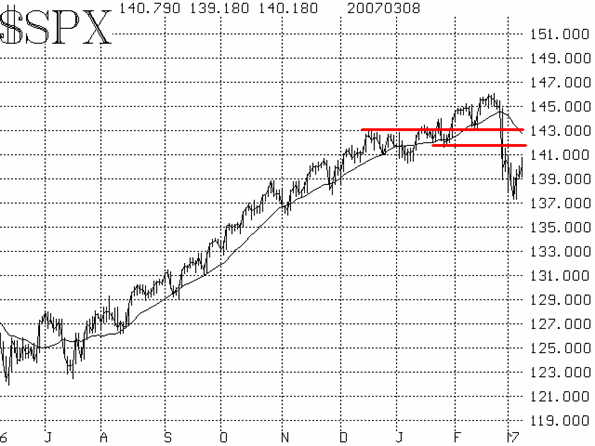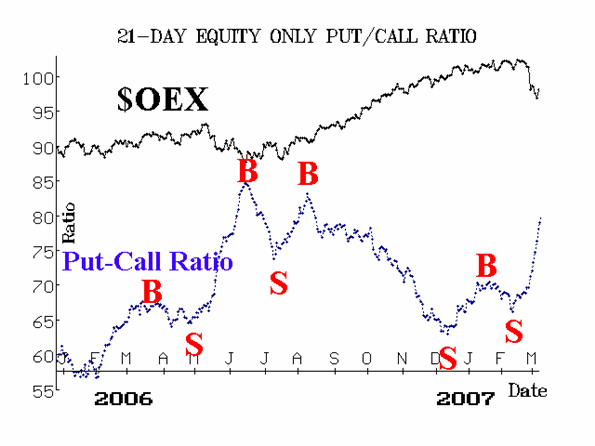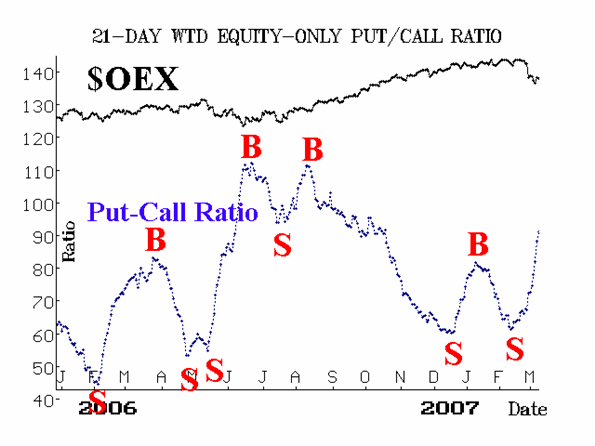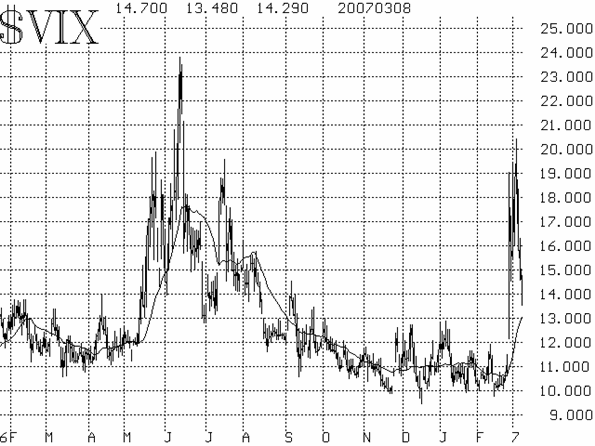| The McMillan Options Strategist Weekly |
| By Lawrence G. McMillan |
Published
03/9/2007
|
Options
|
Unrated
|
|
|
|
The McMillan Options Strategist Weekly
So much has happened in the past 10 trading days that one could justify a myriad of outlooks. However, we feel that the overriding theme is that major damage was done to wallets and psyches last week, and that kind of damage takes time to repair. Thus, while sharp, but short-lived oversold rallies can spring up to counter declines, we think that -- at a minimum -- there will be a retest of this week's lows. And, if that retest doesn't hold, lower prices will result before another retest takes shape. These thoughts, of course, are in line with the feature article this week. Cynics say that no one makes money in bear markets -- not even the bears -- because the reflex rallies are so violent and strong that they take the bears out of their short positions. There is some truth to that, as I'm sure that the 35-point $SPX rally we've seen off the Monday lows has forced some bears to cover. CNBC's incessant cheerleading is a further misleading indicator, that also makes it tough to stay short.

The $SPX chart is still quite negative. It dropped 85 points and has rallied back about 35, so the net loss is still a big one. There is resistance in the 1420-1430 area. If $SPX should climb above 1430, we would likely grade the chart as "bullish," but until then it's bearish.

The equity-only put-call ratios have steadfastly remained on sell signals. The sharp decline caused them to rise quickly as put volume skyrocketed. But, even when the reflex rally occurred this week, put volume has remained heavy and so these ratios continue to rise. As long as they are rising, they're bearish. At this point, they aren't that high on their charts, so one can't really even call them "oversold."

Market breadth was abysmal during the decline. Look at the "stocks only" data for the day of the big decline -- February 27. Only 59 optionable stocks advanced, while 3,211 declined! That's an unheard-of ratio. There has never been a day with that much one-sided market action in history. This clearly reflects the herd-like nature of today's money managers, many of whom are running hedge funds. Some say that this dismal breadth was the unwinding of the "Yen carry trade," as those who had borrowed cheap Yen over the years were heavily invested in the stock market, as well as commodities such as gold, and everything had to be sold when the Yen had to be bought back. However, just a few days later, when the reflex rally unfolded, advances swamped declines (2,898 advances vs. 191 declines in "stocks only" data). NYSE breadth eventually gave a buy signal, although "stocks only" has not.
Finally, volatility skyrocketed, as $VIX nearly doubled. But it has now retreated dramatically. A spike peak in $VIX is a buy signal, and therefore we grade $VIX as bullish after closing below 15 today.

Does this mean we should rush out and buy the market? No, for the first reflex rally often comes with buy signals from $VIX and from breadth. But the more intermediate-term indicators -- the equity-only put-call ratios and the $SPX chart -- don't roll over so easily, and so we wouldn't turn bullish until at least one of those turns positive as well.
Lawrence G. McMillan is the author of two best selling books on options, including Options as a Strategic Investment, recognized as essential resources for any serious option trader's library.
|